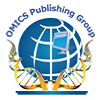Editorial Open Access
Hydrogels as Biomaterials ? How Long More is the Road Ahead?
Loh Xian Jun*
Department of Materials Science and Engineering, National University of Singapore, 9 Engineering Drive 1, Singapore 117576, Singapore
- Corresponding Author:
- Loh Xian Jun
Department of Materials Science and Engineering
National University of Singapore
9 Engineering Drive 1
Singapore 117576, Singapore
Tel: + (65)65167484
Fax: +( 65)67763604
E-mail: mselohx@nus.edu.sg
Received January 25, 2014; Accepted January 27, 2014; Published February 03, 2014
Citation: Jun LX (2014) Hydrogels as Biomaterials – How Long More is the Road Ahead? J Biomim Biomater Tissue Eng 19:e104. doi:10.4172/1662-100X.1000e104
Copyright: © 2014 Jun LX. This is an open-access article distributed under the terms of the Creative Commons Attribution License, which permits unrestricted use, distribution, and reproduction in any medium, provided the original author and source are credited.
Visit for more related articles at Journal of Biomimetics Biomaterials and Tissue Engineering
This is my first editorial contribution to Journal of Biomimetics, Biomaterials & Tissue Engineering and I would like to take the opportunity to discuss the potential of hydrogels as biomaterials. From contact lens to diapers, we find hydrogels everywhere. In terms of development of the material, there is still much more to be done.
As society ages, there is greater demand for improved organ functions and repair of damaged tissues. This has led to the use of synthetic materials in different parts of our body. Traditional covalent chemistry has served us well in terms of the design of materials. The question is what lies ahead for the future of biomaterials? The future of soft biomaterials demands easy synthesis, the ability to respond to multistimuli, safety and efficacy. Polymeric hydrogels can be categorized in numerous ways depending on the type of polymer and their structural characteristics. Chemically cross linked hydrogels are formed by polymer chains linked permanently by non-reversible covalent bonds. This causes the hydrogels to be brittle, at times opaque and not having the self-healing property when the network is disrupted. These covalent bonds can be made using various reactions such as Michael type addition, Schiff base formation, thiol-ene photopolymerizations, free radical photo polymerisation, enzyme-triggered reactions and “click” reactions. Chemical cross-linking can be modulated in order to sufficiently modify the mechanical properties of hydrogels and it has been frequently used when tough and stable hydrogels are desired. Unlike traditional chemistry which relies on covalent interactions, supramolecular chemistry focuses on weaker and reversible noncovalent interactions between molecules. Supramolecular hydrogels are the next-generation materials to enter the biomedical arena. These materials are three-dimensional entities built from cross-linking agents which bond non-covalently (via hydrogen bonds, π-π stacking and van der Waals interactions) to produce fibers and cross linking among fibers. The properties of these materials are vastly different from their covalent counterparts.
The use of injectable supramolecular hydrogels as tissue engineering scaffolds is promising owing to their ability to delivery therapeutics in a sustained and controlled manner. Drugs and cells can be easily encapsulated within the hydrogel matrix. The ideal injectable hydrogel needs to be carefully designed, taking into consideration the hydrogel’s physical, chemical and biological properties. Enormous efforts have been put into the development of injectable hydrogels for the support and repair of the body tissues. Ideally, an injectable hydrogel should mimic the role of the extracellular matrix found in tissues. The biomaterials reported up to date do not meet all the design parameters simultaneously (e.g., lifetime, compatibility with the body or mechanical strength). It can be expected that research into the development of injectable hydrogels will have a huge impact on the progress of tissue engineering. Looking towards the future, the design of bioactive materials that canbe injected at room temperature and form semi-solid gels under physiological conditions will be greatly explored. These gels would also need to be optimised to support cell induction. New crosslinking methods should be developed, both to enhance the material biocompatibility (in terms of the cross-linking agents used) as well as control the mechanical properties. Finally, a truly biomimetic hydrogel should include the natural cell induction ligands such as growth factors and genes which have to be incorporated into the injectable hydrogel constructs so that definite and precise signals can be delivered in an appropriate spatial and temporal manner.
--Relevant Topics
Recommended Journals
Article Tools
Article Usage
- Total views: 12801
- [From(publication date):
February-2014 - Apr 06, 2025] - Breakdown by view type
- HTML page views : 8272
- PDF downloads : 4529
